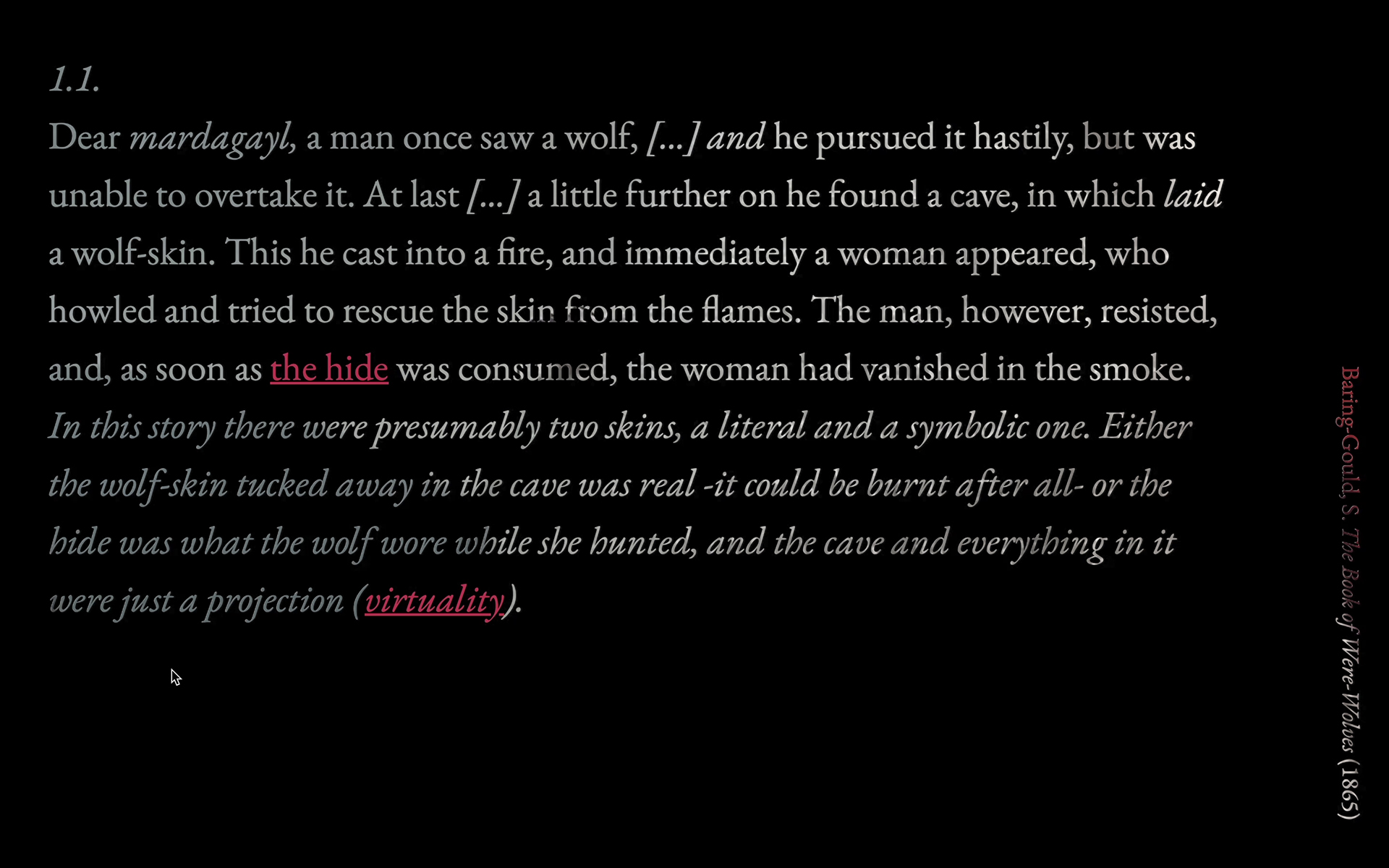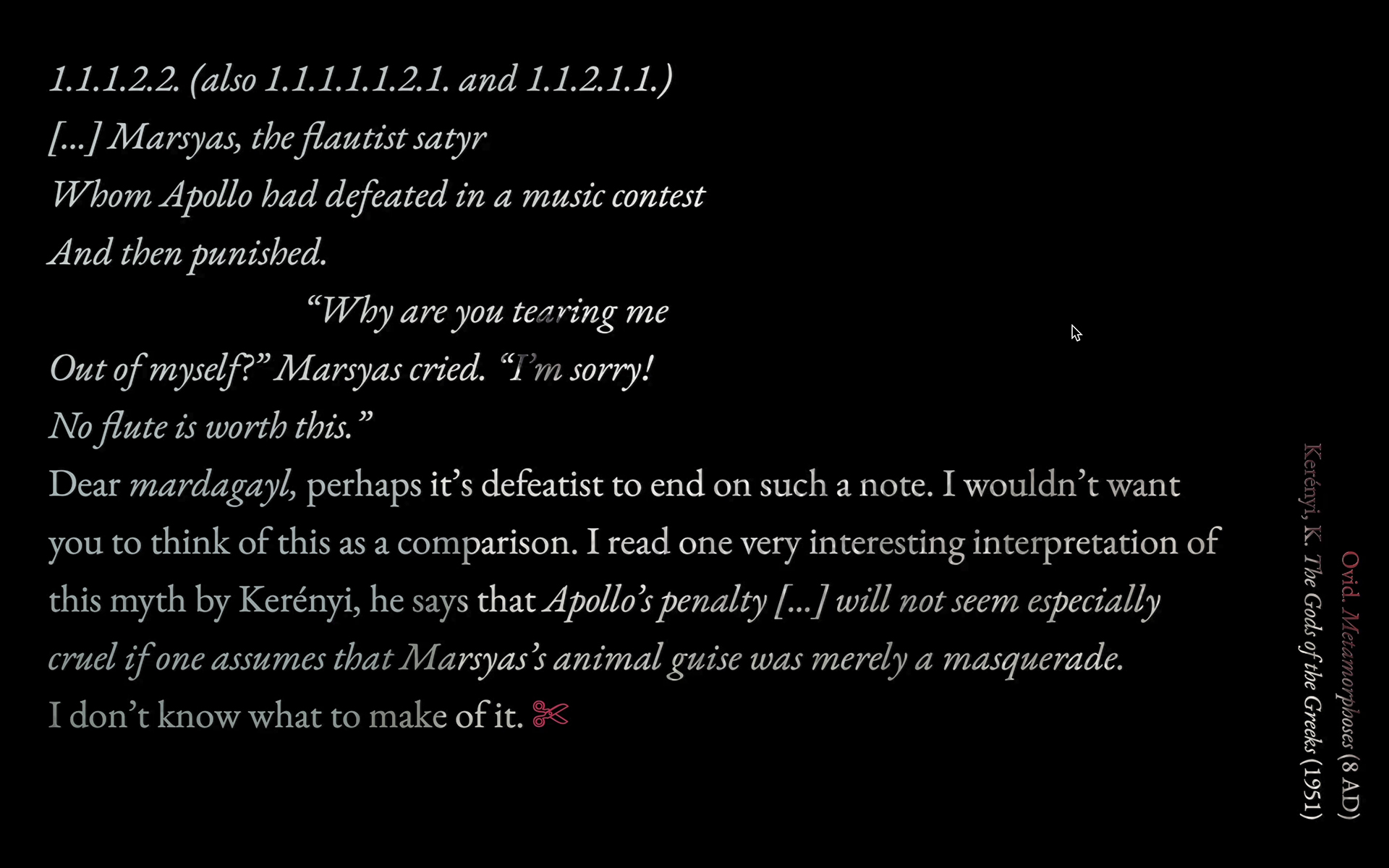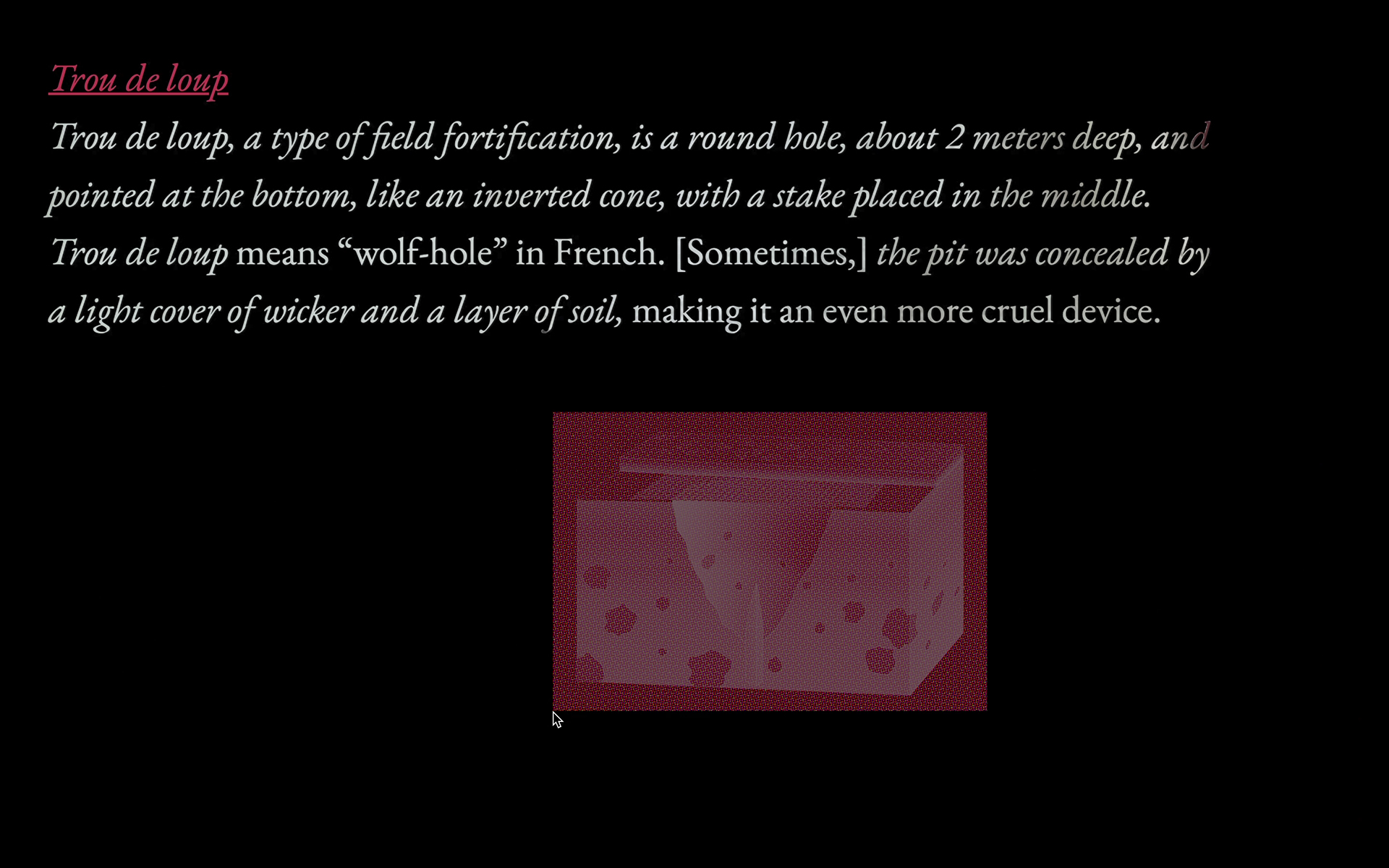





video, 13’41”
Trou de loup is a text and video work about the various interpretations of lycanthropy, or “werewolfism.” It centers on the figure of mardagayl, described by Sabine Baring-Gould as “a female werewolf in Armenian folklore” in his The Book of Were-Wolves (1865).
In one particular and better-known mardagayl story, her skin is found by a man in a cave and burnt in an attempt to defeat the monster. The first chapter of Trou de loup is concerned with this motif, the werewolf’s skin. From the myth of Marsyas who was flayed by Apollo to Anzieu’s psychoanalytical theories about the skin-ego, it reflects on identity as something that may come “from without.” This second layer of skin is treated as a desirable object and not an imposition—as either a shield or a disguise, an enchanted thing one can use to shapeshift or a threshold to move across different bodies and times.
The second half of the text is on the issue of retaliation, both as narrative device and real-life threat. In the story of mardagayl, the werewolf’s relation to her second skin is so strong that it is her single vulnerable part, and only by hurting it can the wolf hunter summon the monster back to her hide. In The Book of Were-Wolves (1865) by Baring-Gould, lycanthropy is directly correlated with duplication, “for the sick person […] believe(s themself) to be double in the bed, or to be severed in half […] often deceived as to the space occupied by (their) limbs”— a medical explanation for why the body may not perfectly correspond to itself all of the time. The second chapter is a dialogue of sorts –between myths, folktales and horror stories– to try and process the fear of retaliation and violence related to a second skin, a hidden hide, or a body double.
Trou de loup has a ramified structure, with each fragment of text splitting its flow into two. The video offers only a preferred reading, whereas the hyperlinked body of text can be read in variable directions.
⚹︎ The title Trou de loup comes from the medieval fortification method of the same name, meaning “wolf hole” in French. This work was developed during BAK’s Fellowship for Situated Practice 2021/2022 and was first exhibited in The Hauntologists at BAK, Utrecht in 2022.